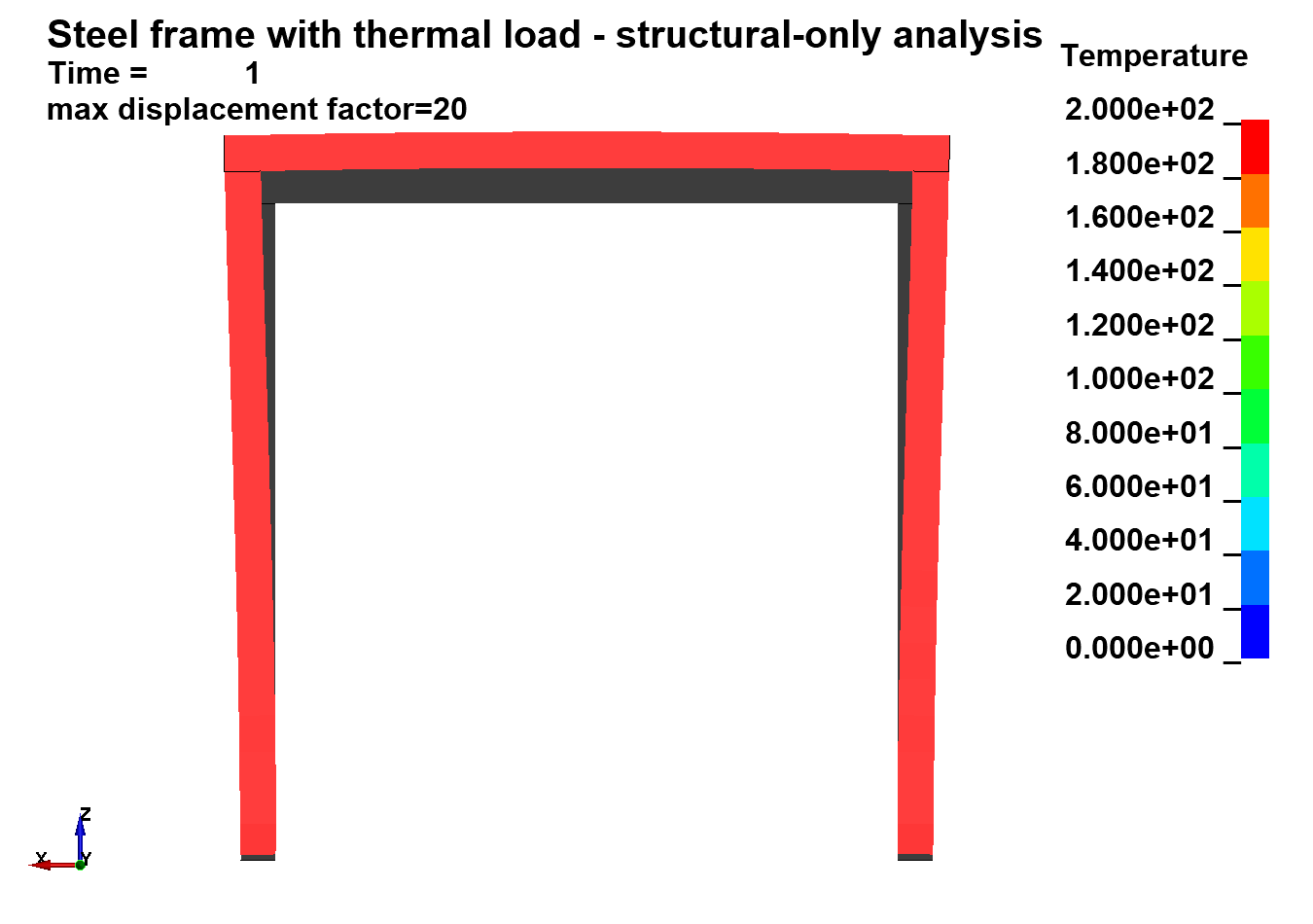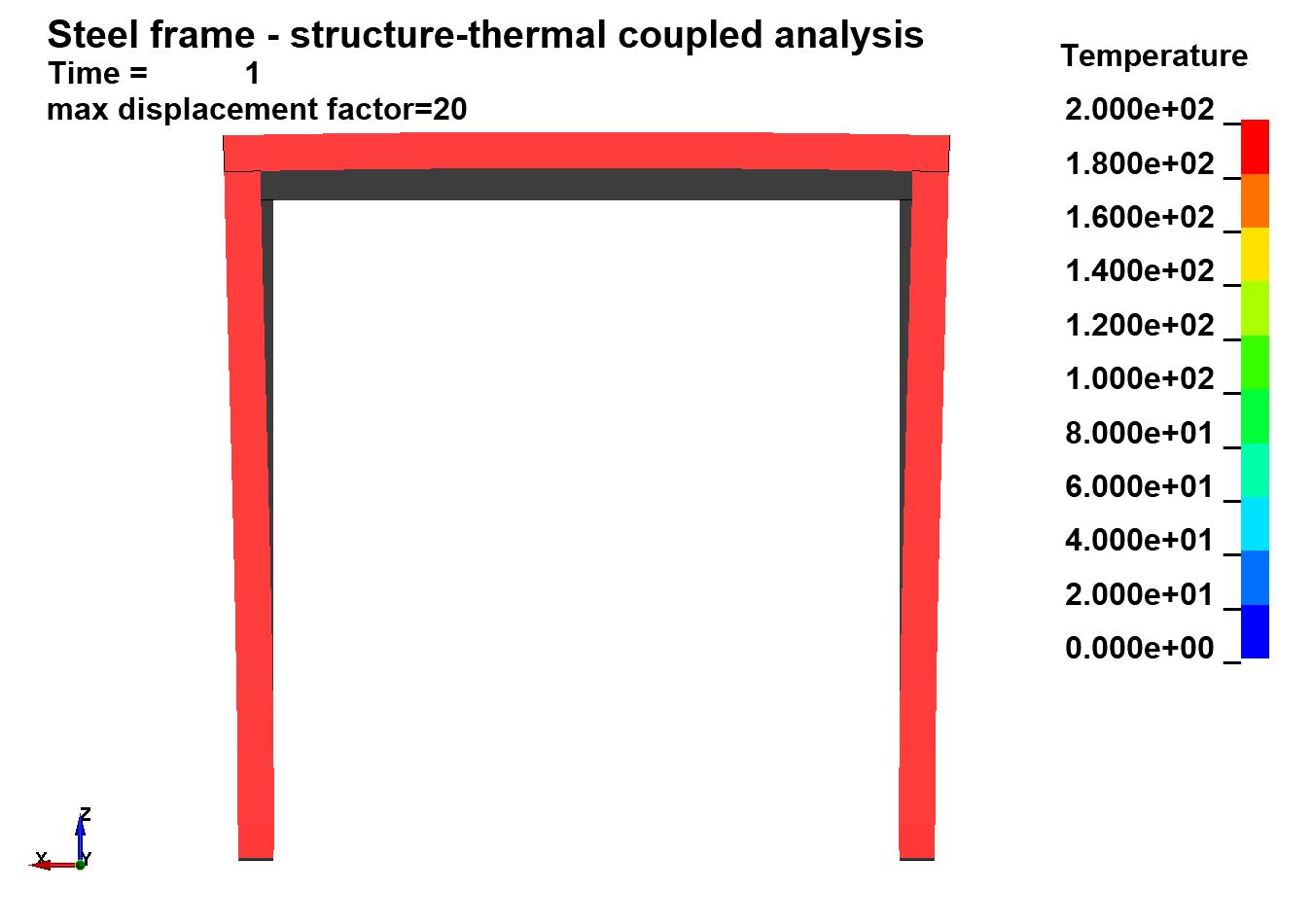Thermal expansion

Thermal load - structural-only analysis
In this example a steel frame is subjected to a thermal load which results in thermal expansion of the structure. The simulation is set up as 'structural-only' analysis using (static) implicit time integration. For the definition of the thermal load the keyword *LOAD_THERMAL_LOAD_CURVE is used. The temperature of the steel frame is initially at 20.0 °C and is ramped up to 200 °C. For the definition of the material properties a simple elastic model is used while the coefficient of thermal expansion for the parts is defined by *MAT_ADD_THERMAL_EXPANSION.

Structure-thermal coupled analysis I
In this example a steel frame is subjected to a thermal load which results in thermal expansion of the structure. The simulation is set up as a structure-thermal coupled analysis using (static) implicit time integration. For the definition of the thermal load the keyword *BOUNDARY_TEMPERATURE is used and temperature fields are calculated by the thermal solver. The temperature fields are handend over to the structural solver which calculates thermal expansion due to the temperature field. The temperature of the steel frame is initially at 20.0 °C and is ramped up to 200 °C. Thermal material properties are defined with *MAT_THERMAL_ISOTROPIC for the thermal solver. The temperature dependent material properties for the strucural solver, like thermal expansion coefficient, are defined with *MAT_ELASTIC_PLASTIC_THERMAL.

Structure-thermal coupled analysis II
In this example a steel frame is subjected to a thermal load which results in thermal expansion of the structure. The simulation is set up as a structure-thermal coupled analysis using (static) implicit time integration. For the definition of the thermal load the keyword *BOUNDARY_TEMPERATURE is used and temperature fields are calculated by the thermal solver. The temperature fields are handend over to the structural solver which calculates thermal expansion due to the temperature field. The temperature of the steel frame is initially at 20.0 °C and is ramped up to 200 °C. Thermal material properties are defined with *MAT_THERMAL_ISOTROPIC for the thermal solver. The temperature dependent material properties for the strucural solver, like thermal expansion coefficient, are defined with *MAT_ADD_THERMAL_EXPANSION.
